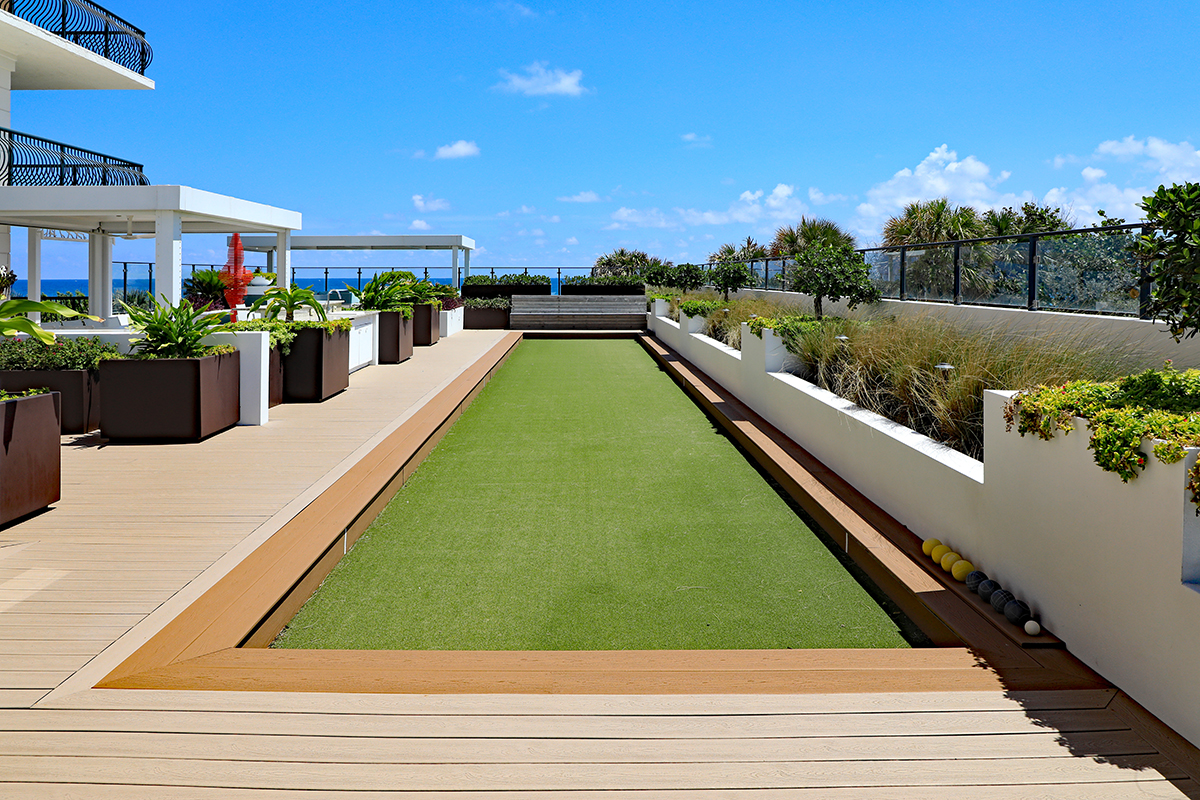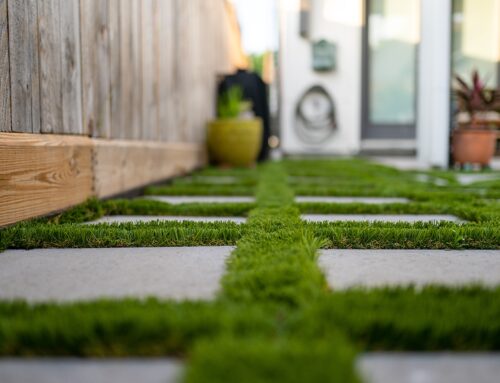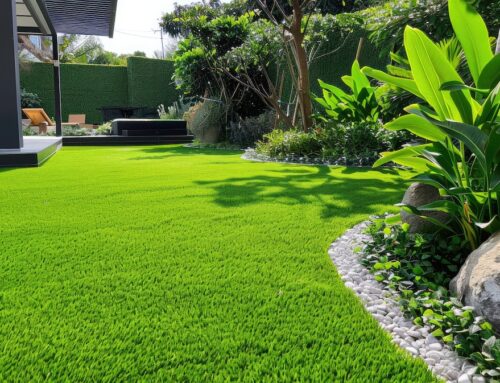Last Updated on February 17, 2022 by ReTurf
Artificial turf for residential lawns has seen a steady increase in interest and use over the past few years. Alongside, there have been questions and concerns raised by those new to the idea. In this article, we will look at some of the primary topics surrounding residential artificial turf use.
Cost
Might as well start with the primary mental juggling act – cost vs return. Installing artificial turf has a high initial cost. It is from here that the long-term math needs to be done. Some of these long-term cost savings may differ depending on your local environment but will be true at some level for any installation site.
One of the biggest factors is the long-term maintenance cost, while artificial turf is not quite maintenance-free, it does require a lot less in terms of upkeep. Things to factor in include:
- Cost of irrigation
- Cost of mowing
- Fertilizer costs
- Weeding costs
- Reseeding costs
- The cost of re-sod or grass plug repair
In contrast, artificial turf requires very little maintenance and you can do all of it yourself. This includes brushing the turf, picking up debris (can even use a leaf blower), and an occasional hose down (those with pets may also mix in an occasional detergent scrub). But that’s about it. An added bonus is the lack of need for the constant use of harsh chemicals (fertilizers and pesticides). The average life of artificial turf is around 20+ years. So, that’s the long-term math to perform. In nearly all cases, artificial turf comes out the clear winner.
Installation
There are basically two options for installation, hire a pro or DIY. To understand which option may be the best fit, let’s look at a quick overview of the work that will need to be done.
Planning: It all starts with a plan. The area needs to be mapped out and then the initial material math can start to take shape. This will also define your approach to the next step, site preparation.
Site preparation: This step requires making sure the area is level and that drainage solutions are in place. If you are on a sloping landscape, the drainage solution may need to have some more thought put into it. However, artificial turf drains very efficiently, making sure the subsurface is set up for this will ensure success. This step will also include weeding and deciding the layers of backfill material needed, if any, for your installation site.
Installation: Installing artificial turf is pretty straightforward, but it does have a unique process. Generally, pieces of turf are precut (with some extra material on all sides), placed into position, trimmed in place, stapled, and seamed. Seaming is the act of connecting two adjoining edges of the turf. This is done through the use of seam tape and turf glue – a glue box will also aid in the process.
Infill: The final step involves spreading infill over the turf area and then brushing it in. Infill is a material that helps aid with draining, turf feel, and the looks of the individual synthetic blades.

Environment
Environment as a subject covers a few areas. Installation environments, environmental impact, and recycling.
Installation Environments
The environment you are in is probably the number one factor that brings you looking for information about residential artificial turf. In places that are drought-prone, require tons of maintenance, or even on an artificial substrate (such as concrete) – artificial turf is a great solution for creating a green healthy looking outdoor living space.
Environmental Impact
This is where we look at the fact that we do not need to impact our local water tables through constant irrigation requirements. We can also negate the use of fertilizers and pesticides which create harmful runoff.
Recycling
This is another huge question that requires some thoughtful reflection. While manufacturers of new turf claim the product can be recycled, it generally doesn’t happen – winding up in landfills. Your first step in the equation towards the renewability of artificial turf is to start with a quality used recovered product yourself. You can learn more about those options here. In this, you are starting off with a renewed product that has already created a positive environmental impact.
At the end of your use, depending on the condition of your turf, it can still find continued life. Reusable sections can be used in batting cages for instance. You may find users who require small pieces for balconies. Or, you can find the upcycle crowd and donate it to projects. Modern solutions are still being developed to connect turf recycling with the traditional recycling methodologies we are used to, such as these guys.



